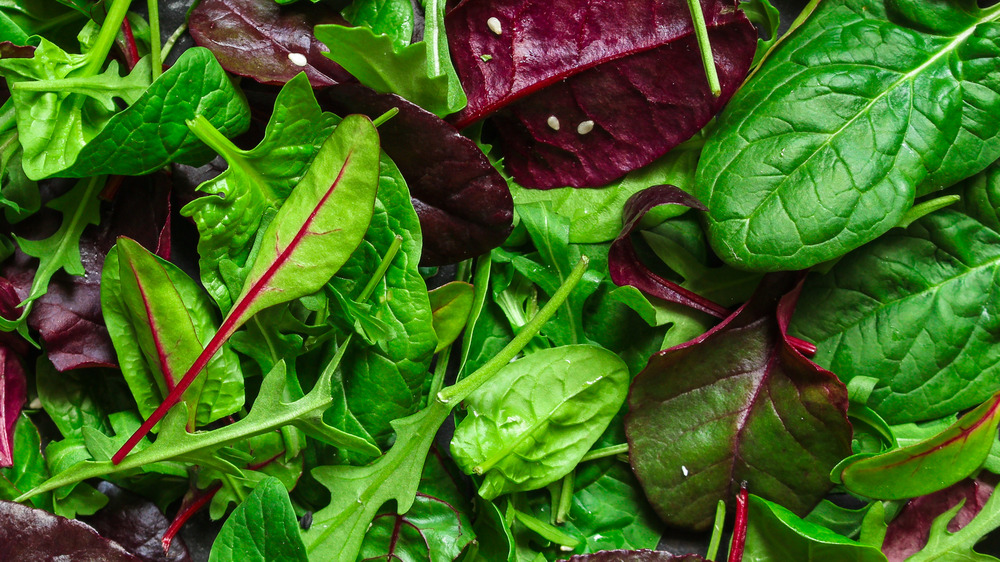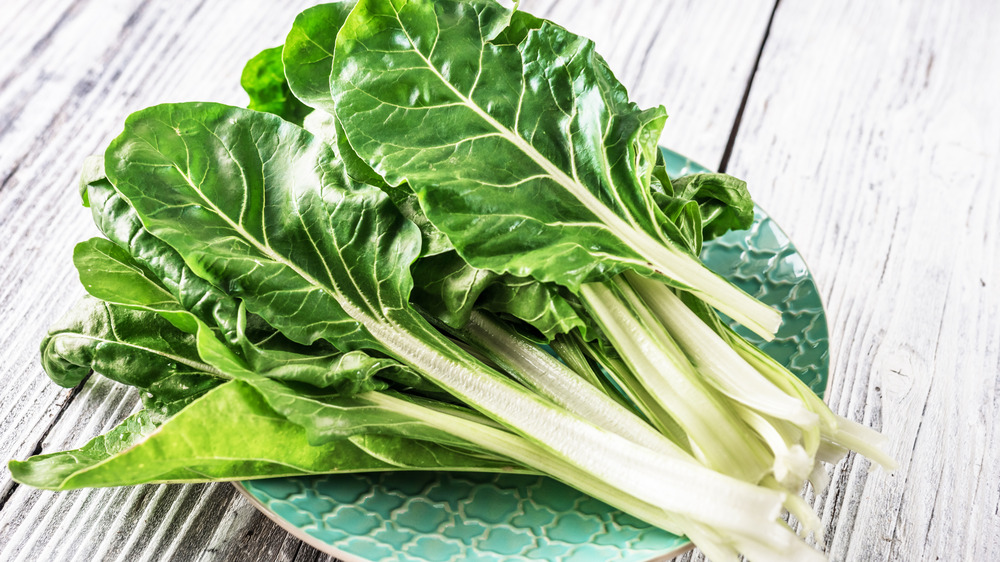The Real Difference Between Spinach And Chard
Whether you blend them into a fruity smoothie or toss them in a crisp side salad, leafy greens are a staple in any healthy diet. There are plenty of different greens to choose from: spinach, kale, chard, arugula, lettuce, to name just a few. While the differences between some are obvious (you can easily tell a bunch of kale apart from a handful of spinach or a head of romaine, for instance), others aren't as clear. Take spinach and chard. They look very similar, yet they're different plants. What sets the two popular greens apart?
It's true that at first glance, spinach may not seem that much different than chard. They share similar appearances (smooth, green leaves), similar tastes, and even similar uses. But there are a few subtle differences between the two. Here's what makes spinach and chard unique from each other, and the benefits of choosing one over the other.
Spinach and chard have different nutritional values
There's no denying that both spinach and chard have health-boosting benefits, but their nutritional makeup is slightly different (they're even from completely different plant families, Virily says). While both are high in vitamins A and K, magnesium, and iron, spinach is much higher in calcium — providing 24 percent of your recommended daily intake compared to chard's 10 percent — and in vitamins B, particularly folate (via SF Gate). In fact, spinach has 10 times the amount of folate than chard. On the other hand, chard provides 53 percent of your daily intake of vitamin C compared to spinach's mere 29 percent.
You can also tell spinach apart from chard based on tiny differences in their appearance. According to Wynlen House, spinach has smaller, softer leaves than chard, along with thinner, greener stems compared to chard's thick, white-tinged ones. Good to know the next time you're standing in the produce section.

